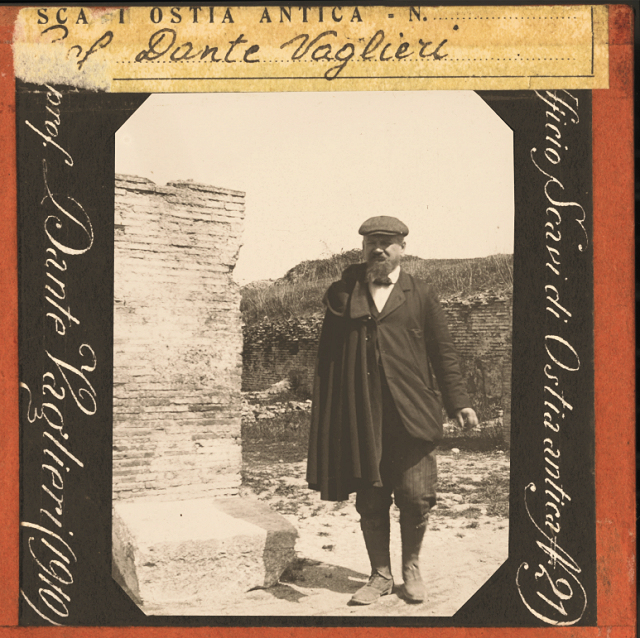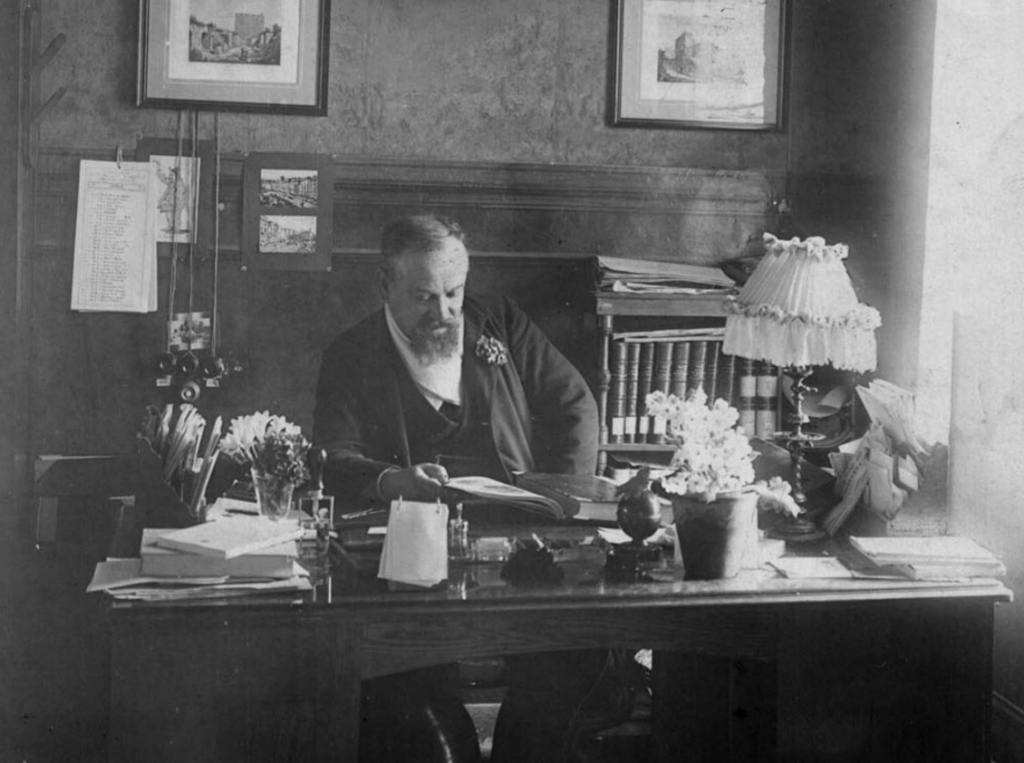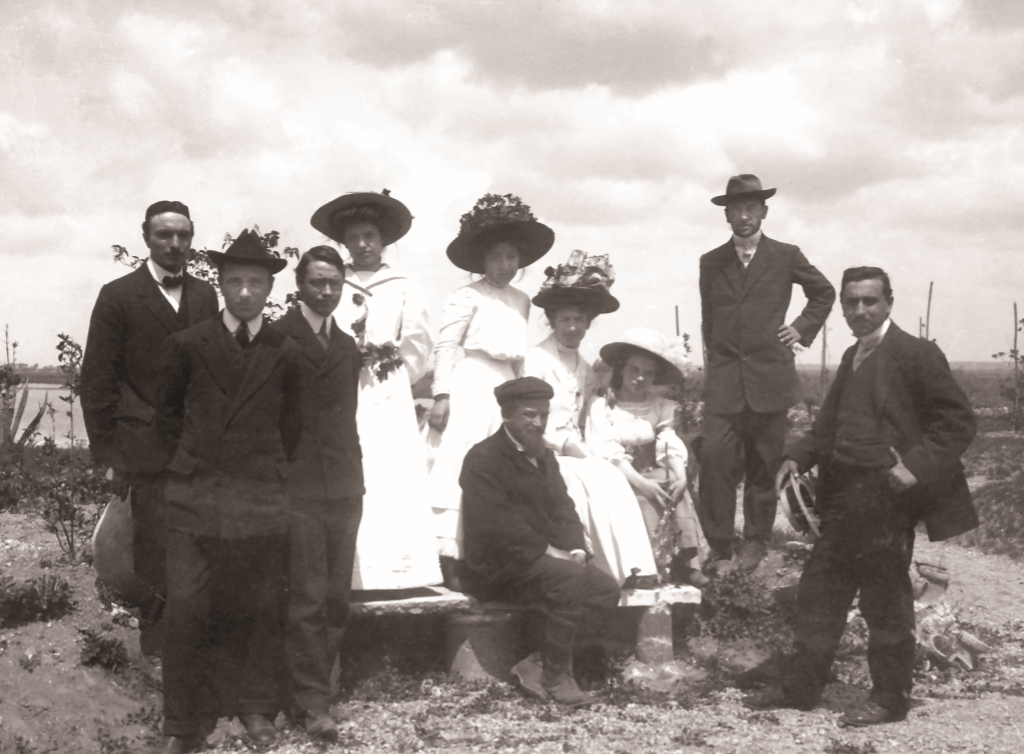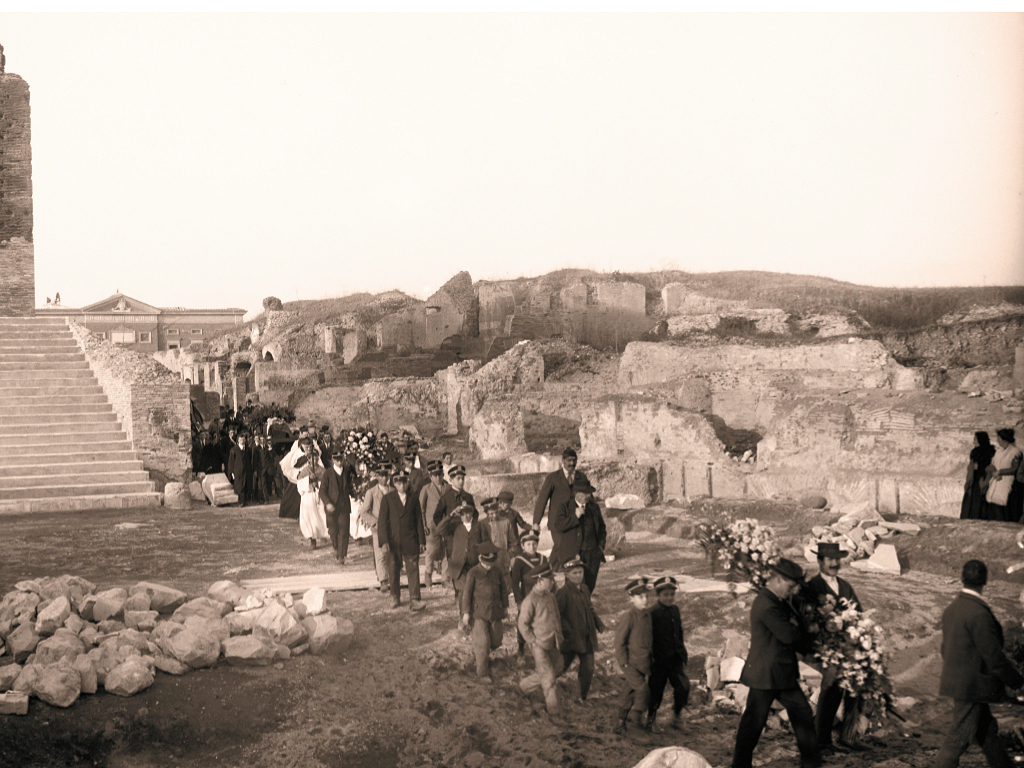DANTE VAGLIERI (1865-1913)

Dante Vincenzo Vaglieri was born on May 31 1865 in Trieste, then belonging to Austria (the family name was then Varglien, later italianised to Vaglieri). His father, Biaggio Vaglieri, was a typographer from Zadar, Croatia. His mother, Rosalia Busetto, was a teacher of embroidery from Trieste. His father died in 1879, and his four brothers and sisters died as children.
From 1883 he studied classical philology and classical archaeology at the University of Vienna under Otto Hirschfeld, Eugen Bormann (pupils of Theodor Mommsen) and Otto Benndorf. Probably because of his pro-Italian sympathies he had some problems with the Austrian police, and in 1885 he went to the University of Rome, where he studied Latin epigraphy and Roman antiquities under Ettore De Ruggiero (another pupil of Mommsen). In 1887 he obtained his degree.
After his study he worked as an assistant of De Ruggiero, then director of the Museo delle Terme, and as teacher of Latin epigraphy and Roman antiquities at the university. In 1896 he became vice-inspector and in 1897 inspector for the Museums, Galleries and Excavations. In 1901, in a period of intense political and personal conflicts and rivalry, he became Director of the Museo delle Terme (Museo Nazionale Romano).
This was followed soon by a special appointment in the Ministry of Public Instruction, and participation in missions to Egypt and Montenegro. In 1903 he returned to the museum and was appointed as extraordinary professor of Roman Epigraphy at the University of Rome.
In 1906 a ministerial inquiry held him responsible for irregularities in the management of the museum and he was transferred to the Office for the Excavations and Discoveries of Antiquity, which he then led, excavating on the Palatine Hill. The political struggle for authority continued, with mutual accusations of incompetence and negligence. His excavations on the Palatine also led to a bitter archaeological conflict with Luigi Pigorini concerning the iron age hut (Casa Romuli). Vaglieri lost the battle in 1907. In 1908 he was nominated as director of the Scavi di Ostia.
In April 1910 he became ordinary professor of Roman Epigraphy at the University. Between 1890 and 1913 he became (corresponding) member of various institutes (Germany, Greece, Austria, Egypt, Rumania). In April 1911 he became president of the Associazione Archeologica Romana.
When he started his work in Ostia there were many sceptics amongst his colleagues. On site however he was supported by his secretary Guido Veniali, "soprastante" Raffaele Finelli, Italo Gismondi and Guido Calza. Vaglieri believed in "romanità": "Rome is the greatest thing the world has seen"; "From the smallest ruin poetry emanates". He admired the Roman remains in "French Africa". He was a friend of Paolo Orlando, who wanted to give Rome a new, modern maritime facade. Orlando's committee "Pro Roma Marittima" supported Vaglieri.
Vaglieri's political loss turned out to be beneficial for Ostia. When he arrived in Ostia the city was half-forgotten and consisted of scattered ruins. With a scientific, methodological approach he started changing the site to a coherent ensemble, making its lay-out visible. Funding by the ministries increased substantially. He could employ about fifty workers and introduced a mini-train (ferrovia Decauville) for the transport of the excavated soil.
He organized conferences and guided tours, assuring also the training of the guides. For him publications were not enough: he wanted scientists and tourists to visit and experience the site. He was in touch with the French archeologist Jérome Carcopino (but how friendly these relations really were is uncertain, in view of Carcopino's harsh criticism of the work of one of Vaglieri's pupils).
He loved flowers and birds amongst the silence of the ruins and banned the hunting of birds. He took care of a garden next to the offices in the Casone del Sale (the present day museum) and another one on the Square of the Corporations. Inside the office he set up a library and a photography room. Amongst the many photos taken was an aerial photo (1911). Finds were kept and on display in five rooms in the Castle of Julius II, forming an Antiquarium.

Vaglieri in his study in the Castle of Julius II, in 1913.
Vaglieri was judged in a positive way by people working with him in Ostia. At the university, they say, he was not a distant teacher, but gathered many young people around him, helping them like a father, giving advice, and making them familiar with strict and methodical excavations. He is described as a modest man, who preferred to work "in the shadows".
He was not an eloquent public speaker, unless he was in "his Ostia". In conversations with friends and students he showed pride only because of the appreciation that the "Sovrani" showed towards his work. These visited the excavations often, and then found him amongst the workers, in the trenches, in the darkness of a drain or a cistern, taking measurements, showing what had to be done in what way, almost dressed like a worker (photos show a nice contrast between his clothes and the smart clothes of Gismondi). The workers loved him, because he was more than a director. He was a friend and counselor, who appreciated their work. He was present in Ostia, amongst them, with "self-denial". A few days a week he lived in the Castle, a place with few amenities.
He married Alba, daughter of professor de Ruggiero. He was personally involved with the education of his three daughters. His daughter Laura (1893-1989) was an orientalist, and married Edoardo Veccia Scavalli. His daughter Bianca Delia married in 1918 with the archaeologist Renato Bartoccini (a pupil of Vaglieri). His third daughter Attilia (1891-1969) was one of the first female architects in Italy. She married the architect Umberto Travaglio. Later Dante Vaglieri married Edvige Bongera (1861-1947).

Vaglieri (seated) with his wife Edvige and his three daughters, in 1911.
Second from the left: Guido Calza. Second from the right: Jérome Carcopino.
Dante Vaglieri died in Ostia in the night of 12-13 December 1913. He was buried in Ostia on December 14, in the Church of S. Ercolano. His coffin was carried from the offices to the church, through the ruins, along the Decumanus.
Vaglieri published many excavation reports, especially in the Notizie degli Scavi. A comprehensive guide of Ostia (Ostia. Cenni storici e guida) was published in the year after his death.

Vaglieri's funeral procession passing the Capitolium, December 14 1913.

Compiled from various sources (see online bibliography - Researchers - Dante Vaglieri) by Jan Theo Bakker.
Photo credits: Parco Archeologico di Ostia.